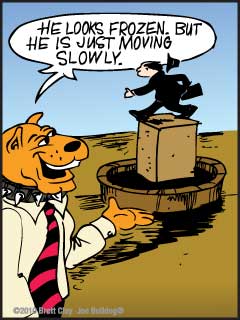Change Leadership — Secret # 22
People Are Always In Motion
Things do not change; we change. —Henry David Thoreau
What I Need to Know |
An interesting, almost paradoxical concept is that people are always in motion. This contrasts the notion asserted by many psychologists that people’s personalities are formed by the end of childhood and never fundamentally change afterward. Can you think of many examples of people in your business or life of whom you would say, “I would never trust that person,” or “S/he will always be jerk,” or “That person is truly kindhearted”?
Most of us would accept as true that in some ways people do not change. In fact, those dominant behavioral traits and tendencies are invaluable in helping predict people’s responses. However, you should never assume a person or organization is static. People do not freeze into motionless statues.
They are always in motion of some kind. They are always feeling forces of some kind. And they are always responding in some fashion. Therefore, people will certainly change, although some will change more than others. The question is not “Will the person change?” Rather, “How will the person change?”
In Forceful Selling, I stated the corollary to the third Law of Change as “People are always in motion, because they are always under the influence of forces.” The key questions are then:
- Where is the person, right now, in her life space?
- What forces does she feel?
- What move will she make in her life space?
- When will she make the move?
What I Need to Do |
The point of view that “people are always changing” speaks to the importance of perseverance and patience. The third Law of Change is “Wherever a force exists, it will tend to stimulate locomotion to a different space.” So while the person may not be in a position to change, right now, if forces are present, you can be sure the person will eventually get off his chair and make a move.
Try to understand what forces are present. Then predict when the person may take action. Monitor the customer for signs of movement, ensuring you, rather than your competitor, are the salesperson present when the customer takes action.
Another point of view is that “people are always in motion.” This begs the question, “Where is the person going?” Try to understand the answer and help the customer get there. Of course, as a change leader, do not accept trivial answers such as, “I am solving such-and-such problem.” You are asking the question in the context of the person’s life space. What internal need is the person pursuing?
Action Summary |
|
 |



Social